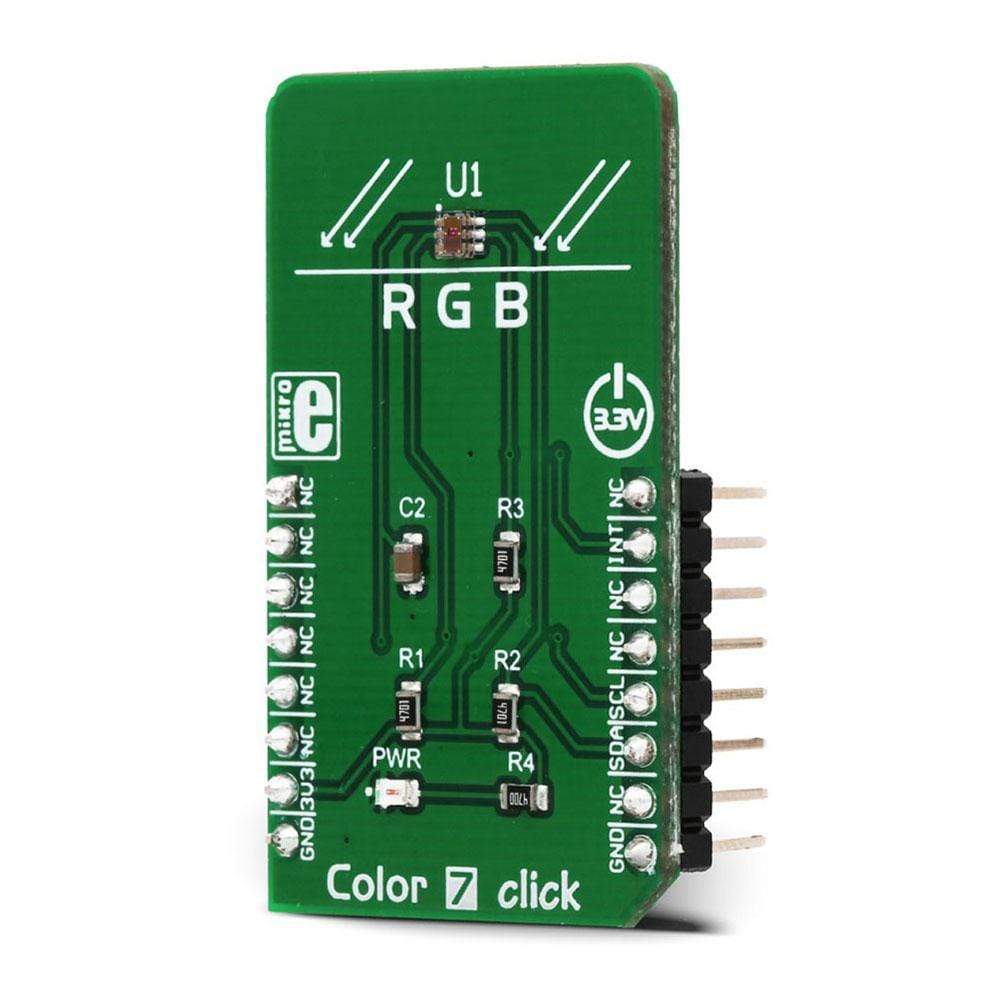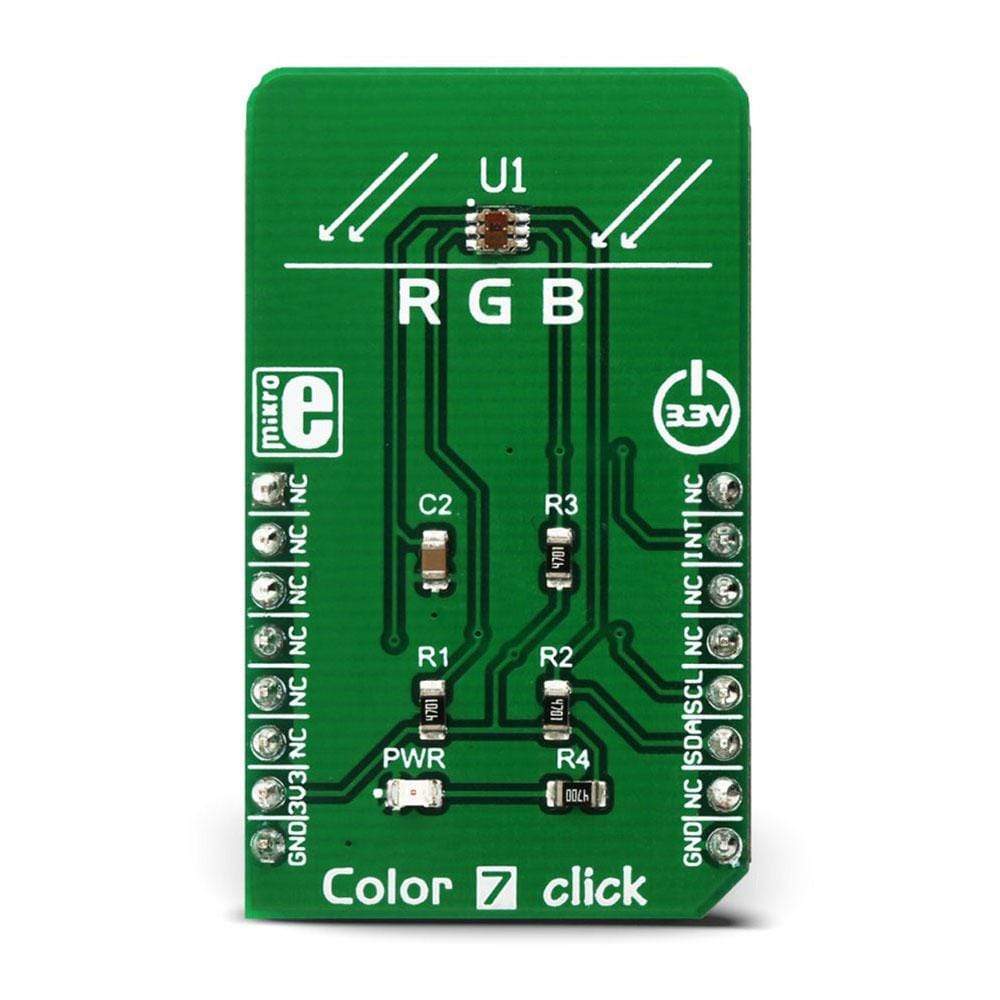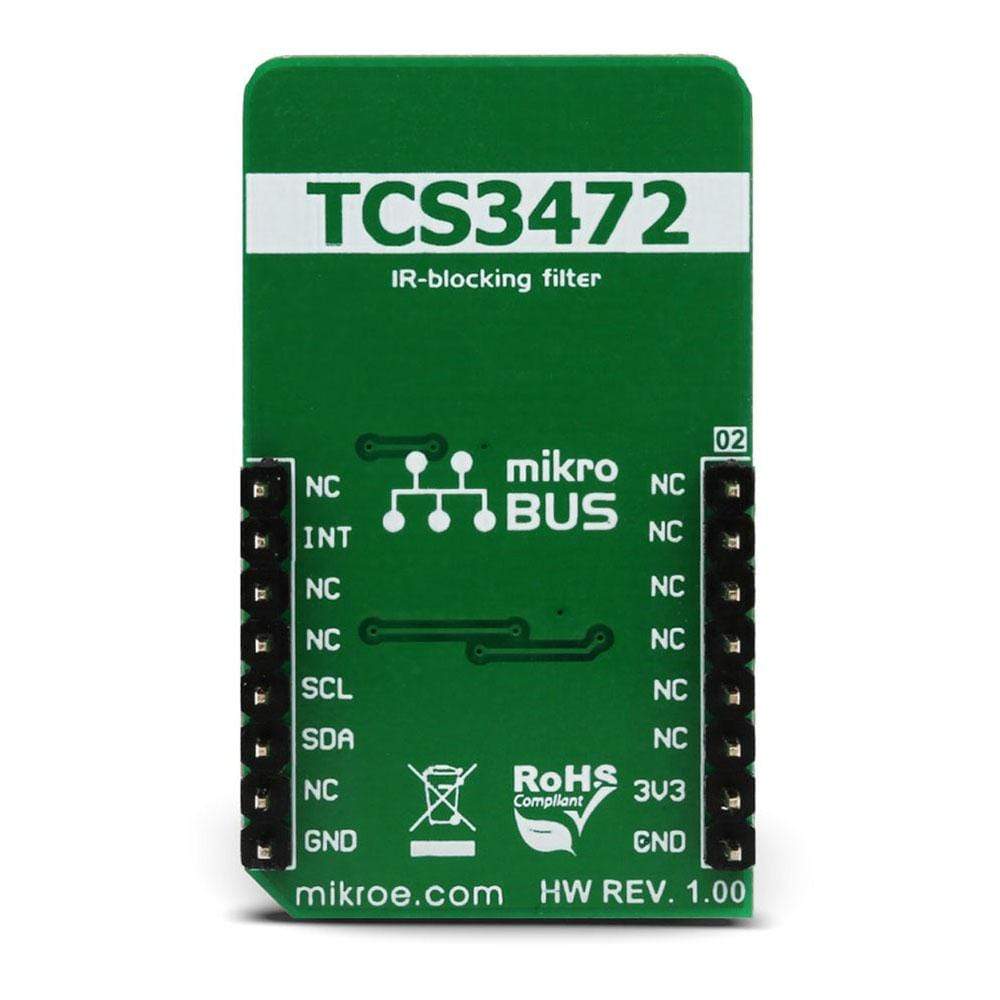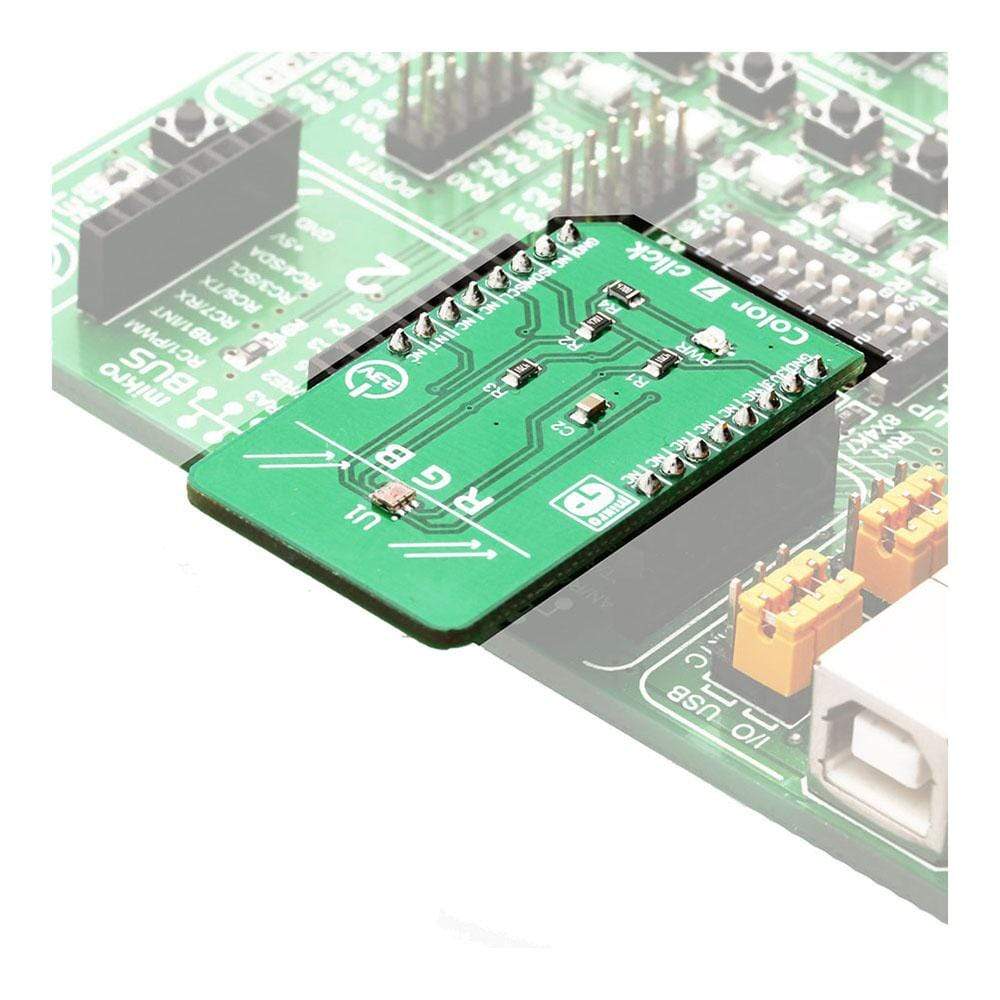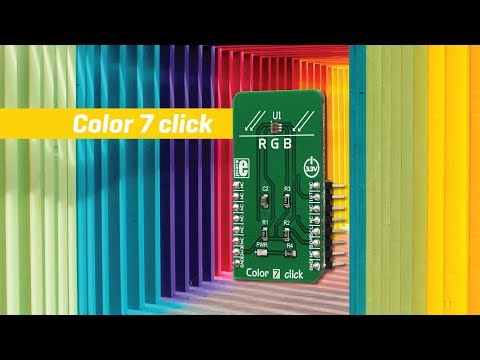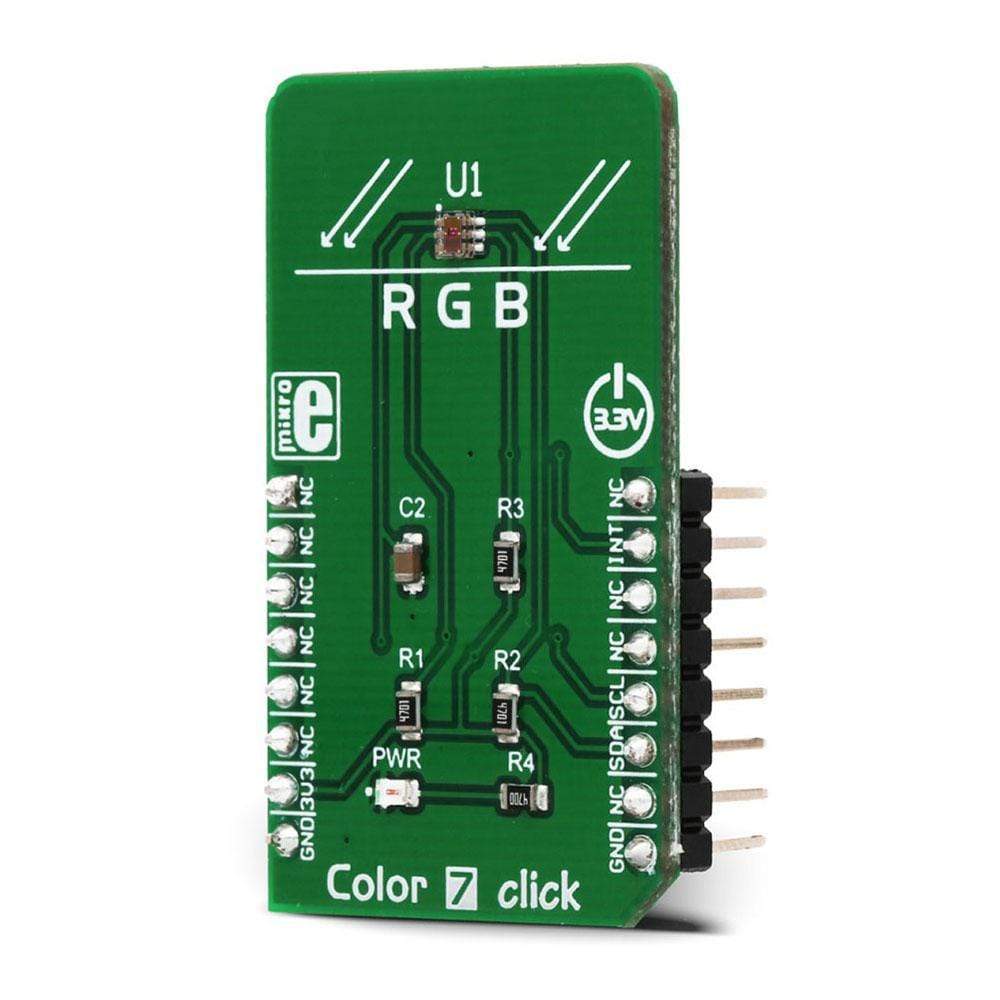
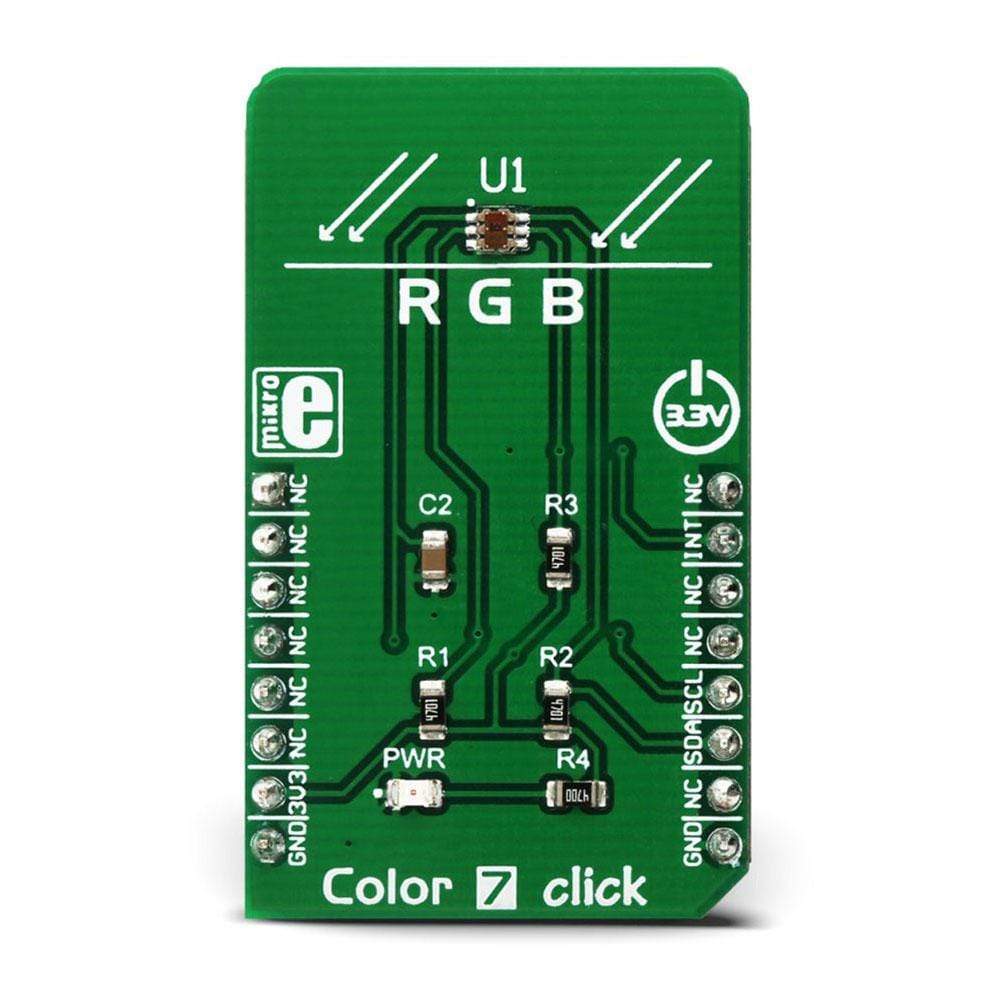
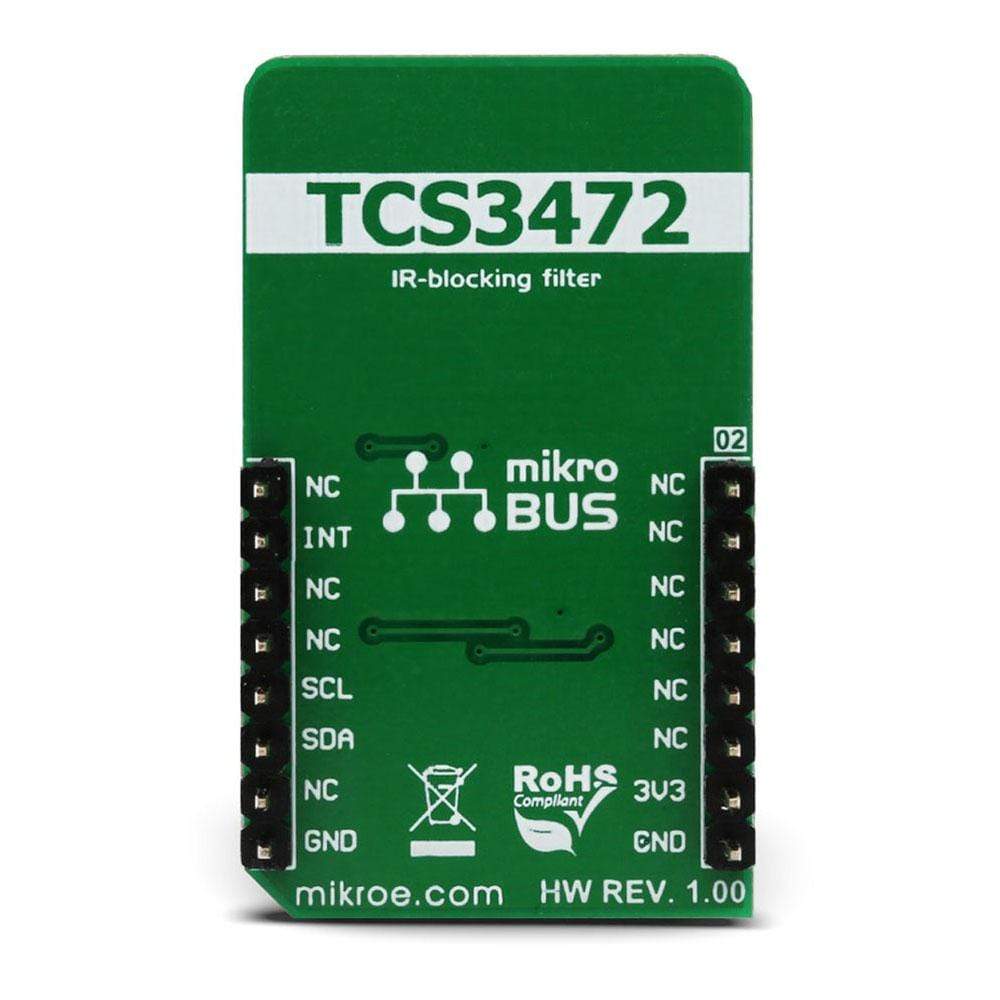
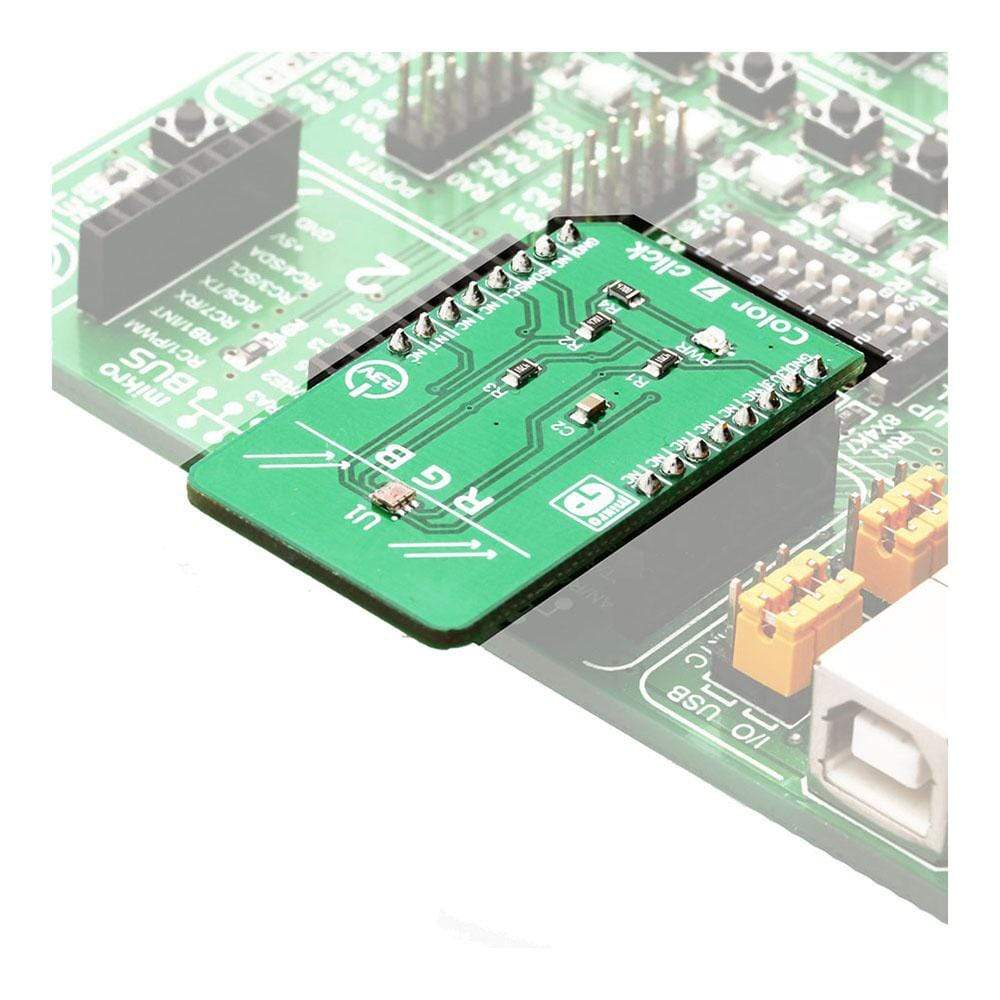
Overview
The Color 7 Click Board™ is a very accurate colour sensing Click Board™ which features the TCS3472 colour light to digital converter with IR filter, from AMS. It contains a 3x4 matrix of photosensitive elements, which can sense red, green, blue and clear light components. Additional IR resistive coating reduces the influence of the IR component of the light spectrum. Four low noise 16-bit ADCs ensure the high dynamic range, making this sensor suitable to be used behind dark glass.
The sensor offers a fast I2C interface for communication with the host MCU. The ability to measure light without the influence of the IR makes this device a good choice for Ambient Light Sensing (ALS).
Downloads
Le Color 7 Click Board™ est un capteur de couleur très précis doté du convertisseur de lumière couleur vers numérique TCS3472 avec filtre IR, d'AMS. Il contient une matrice 3x4 d'éléments photosensibles, qui peuvent détecter les composantes de lumière rouge, verte, bleue et claire. Un revêtement résistif IR supplémentaire réduit l'influence de la composante IR du spectre lumineux. Quatre ADC 16 bits à faible bruit garantissent une plage dynamique élevée, ce qui rend ce capteur adapté à une utilisation derrière du verre foncé.
Le capteur offre une interface I2C rapide pour la communication avec le microcontrôleur hôte. La capacité de mesurer la lumière sans l'influence de l'IR fait de cet appareil un bon choix pour la détection de la lumière ambiante (ALS).
| General Information | |
|---|---|
Part Number (SKU) |
MIKROE-3062
|
Manufacturer |
|
| Physical and Mechanical | |
Weight |
0.014 kg
|
| Other | |
Country of Origin |
|
HS Code Customs Tariff code
|
|
EAN |
8606018713196
|
Warranty |
|
Frequently Asked Questions
Have a Question?
Be the first to ask a question about this.

